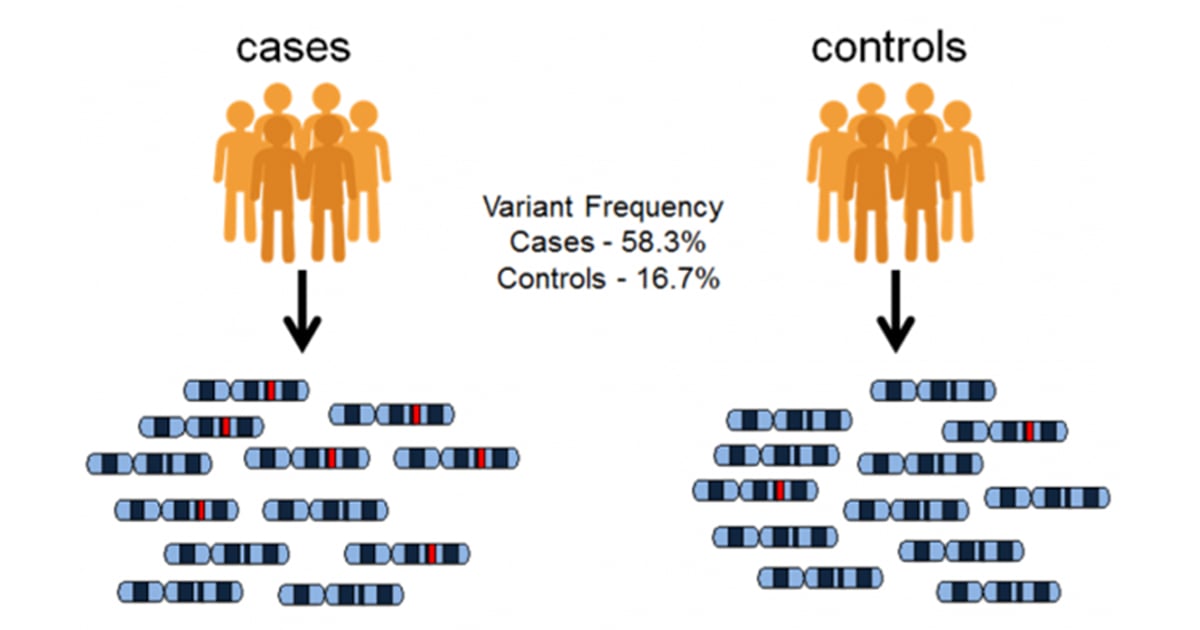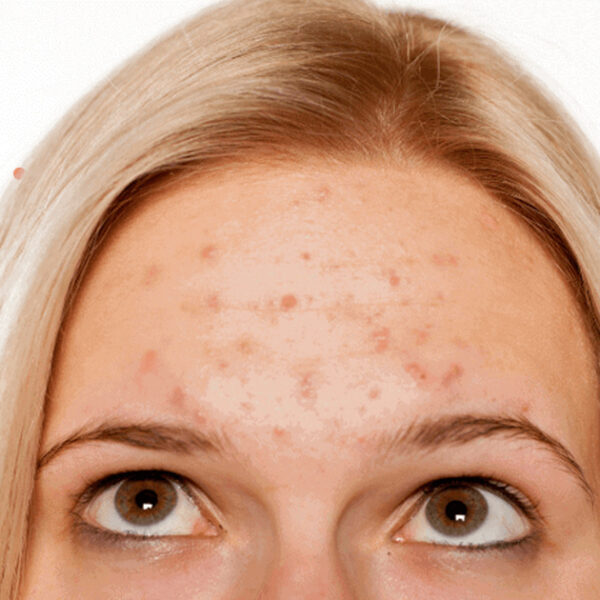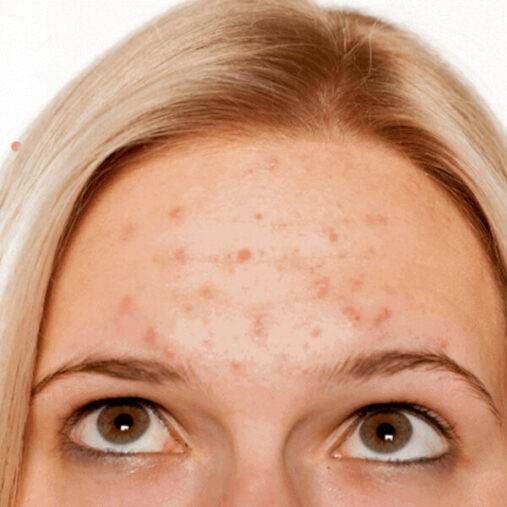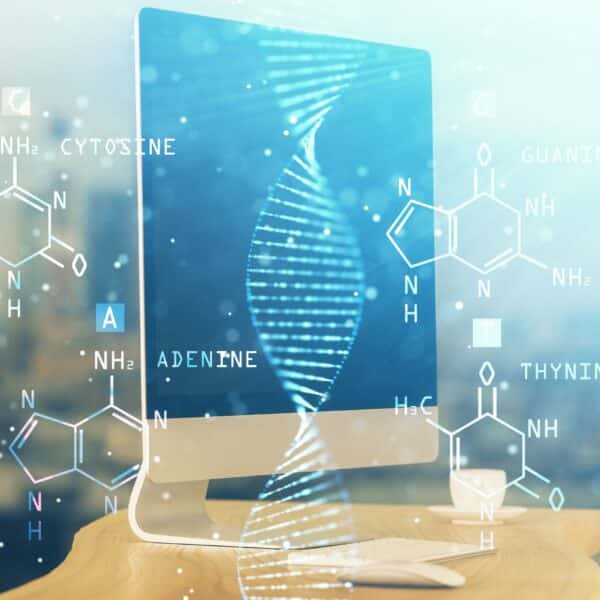Visual Acuity: Seeing Clearly Through Science and Genetics
Aira
on
November 15, 2023
What is Visual Acuity?
Visual acuity measures how well a person’s eyes can discern fine details, often referred to as having “20/20” vision. It is akin to the ability to read small text, recognize distant faces, or perceive intricate patterns. Visual acuity is assessed through various tests, commonly involving reading letters or symbols on a chart.
It is influenced by inherent eye factors like light entry and optical quality, as well as external factors such as lighting, corrective lenses, and object contrast. It also acts as an objective indicator of an individual’s capacity to perceive small details in their visual surroundings.
Factors influencing visual acuity encompass the eye’s optical properties and the interplay of external elements that collectively impact the clarity with which these details can be seen.

Measuring Visual Acuity
Measuring visual acuity (VA) is a crucial process in evaluating an individual’s ability to perceive fine details in their visual field. It helps establish a baseline recording of VA, aids in diagnosing eye diseases or refractive errors, assesses any vision changes, and even measures the outcomes of surgeries like cataract removal. The procedure involves assessing one eye at a time to ensure accuracy.
To carry out VA testing, you’ll need specific equipment, including a multi-letter Snellen or E chart, a plain occluder (like a card or tissue), a pinhole occluder, a torch or flashlight, and the patient’s documentation. It’s essential to have good natural light or illumination on the chart, providing the patient with the best chance to see and read the chart. The patient is positioned at a distance of 6 meters from the chart, and one eye is tested at a time, first without any spectacles if worn.
Record the smallest readable line, e.g., 6/18, with the upper number indicating chart distance (6 meters) and the lower number representing a ‘normal’ eye’s distance. Incomplete lines can be added to the last complete one. After testing without correction, assess VA with current distance spectacles, recording results for each eye separately.
Use a pinhole occluder if the best vision (6/6) isn’t achieved to identify possible causes of visual impairment, such as corneal irregularities, lens issues, or refractive errors that may require correction.
The same procedure is then repeated for the other eye, and the summary of VA for both eyes is recorded in the patient’s notes. It’s important to ensure that VA testing is done accurately, particularly when dealing with children, as incorrect results can lead to inappropriate decisions and management.
Genetics of Visual Acuity
The genetics of visual acuity is an intricate area of study. In the pursuit of understanding the genetic underpinnings of visual acuity, a Genome-Wide Association Study (GWAS) was conducted. This study, involving a large cohort of individuals, revealed significant genetic associations with visual acuity.
NPLOC4 Locus
Twelve Single Nucleotide Polymorphisms (SNPs) located at the NPLOC4 locus on chromosome 17 reached genome-wide significance. The strongest association was found for rs11656126, with each copy of the major allele shifting an individual towards better visual acuity. This discovery suggests that genetic variations at the NPLOC4 locus play a significant role in regulating visual acuity.
Other Loci
In a targeted replication analysis of SNPs derived from previous literature, two genomic loci reached Bonferroni-corrected significance. The first locus included SNPs from the NPLOC4 and the PDE6G gene and was associated with both reduced refractive error and visual acuity. The second locus spanned an intergenic region upstream of PRSS56, previously associated with myopia and refractive error.
Genes associated with Primary Open-Angle Glaucoma (POAG)
Several Single Nucleotide Polymorphisms (SNPs) have been associated with Primary Open-Angle Glaucoma (POAG), a condition affecting vision. Here are some notable SNPs linked to POAG:
APOE gene (rs449647)
A study involving five different research efforts found a significant association between this SNP and POAG. Apolipoprotein E (APOE) is a member of the lipoprotein class responsible for regulating lipid metabolism in the body. Numerous studies have indicated an association between apolipoprotein E and neurodegenerative diseases, including Alzheimer’s disease and glaucoma.
PLXDC2 gene (rs7081455)
This SNP was reported in three studies, and a significant association was found in the allelic model. Plexin domain-containing 2 (PLXDC2) is a transmembrane protein on the cell surface that acts as a receptor for pigment epithelium–derived factor (PEDF). The presence of a genetic variant in PLXDC2 might result in elevated intraocular pressure.
TMCO1 gene (rs4656461)
This SNP has been studied in four different investigations and was found to have a significant association with POAG in the allelic model. The TMCO1 gene produces a transmembrane protein that is capable of localizing to various cell components such as the Golgi apparatus, endoplasmic reticulum, or mitochondria in different cell types. It is suggested to play a role in apoptosis, the process of programmed cell death.
These SNPs provide valuable insights into the genetic aspects of visual acuity and the risk of developing POAG. Understanding the genetic underpinnings of eye diseases like POAG is crucial in identifying at-risk individuals and developing targeted treatments to preserve and enhance visual acuity.
Non-genetic (Environmental) Factors Affecting Visual Acuity
How well a person can see is influenced by various factors beyond their genes. While genetics play a significant role in shaping our visual potential, several non-genetic factors also come into play, impacting the clarity and sharpness of our vision. Knowing what these non-genetic factors are, is essential to appreciate the full spectrum of influences on visual acuity.
Refractive Error
One significant factor is refractive error. It’s when a person’s eyes don’t focus properly. Myopia, or short-sightedness, means the image focuses in front of the retina, while hyperopia, or long-sightedness, means the image focuses behind the retina. Both of these conditions can result in blurriness.
Pupil Size
The size of the eye’s pupil is important, too. The pupil controls how much light enters the eye. Larger pupils allow more light in, which can be great for brightness but might introduce problems with clear vision. Smaller pupils reduce these issues but can limit the amount of light reaching the retina. So, a medium-sized pupil strikes a balance for good vision.
Illumination
The level of brightness in the environment also plays a role. Think of it like adjusting the brightness on a TV. In very bright conditions, our eyes can see details well. In lower light, only specific parts of our eyes are active, leading to less sharp vision. It’s about finding the right balance.
Time of Exposure of the Target
When individuals try to see something, the time they spend looking at it matters. It’s not just about the amount of light. For example, when looking at a small, bright dot, it’s more about the light itself. But when looking at a line, the longer it’s observed, the clearer it becomes. It’s a bit complex to explain.
Area of the Retina Stimulated
The center of vision, where individuals look directly, is very sharp. But as they look away from the center, things get blurrier. It’s like having a “sweet spot” in their vision. If they move too far from it, things aren’t as clear.
State of Adaptation of the Eye
Our eyes adapt to different light levels. In bright light, our vision is at its best. In the dark, not so much. Special cells help with this adaptation affecting our ability to see clearly.
Eye Movement
Even when individuals think their eyes are still, they’re making tiny movements. This affects how they see things, making them seem a bit fuzzy.
All these factors combine to determine how well people see. It’s a mix of various elements, with genetics playing a part, but these non-genetic factors are just as crucial. Understanding them can help us take care of our vision and see the world with more clarity.
Correcting Visual Acuity Problems
Visual acuity is a vital aspect of human vision, enabling individuals to achieve 20/20 clarity, and allowing them to discern fine details and navigate the world with precision.
It is pivotal in their ability to read small text, recognize distant faces, and appreciate intricate patterns. However, in the pursuit of perfecting the 20/20 vision, challenges arise, and various correction methods have been explored.
To enhance visual acuity, especially in cases of reduced clarity, several correction methods have been investigated. These methods aim to ultimately improve the overall visual experience.
Vision Correction Lenses
Vision correction methods encompass a range of options, including single-vision lenses, bifocals, progressive addition lenses (PALs), and contact lenses.
Single-vision lenses are commonly prescribed for vision issues, but their effectiveness varies based on individual needs. Bifocals and progressive addition lenses have shown promise in enhancing visual acuity, although further research is ongoing.
Contact lenses, particularly rigid gas permeable (RGP) lenses, can provide clear vision, but the potential reversibility of their effects requires further optimization through research.
Under-Correction of Visual Acuity
Some clinicians recommend under-correction as a strategy to achieve better clarity. Research suggests that under-corrected lenses may not be as effective in enhancing visual acuity as fully corrected ones. The choice between these approaches requires careful consideration and further investigation.
Pharmaceutical Agents
Atropine and pirenzepine, pharmaceutical agents, have demonstrated potential in enhancing visual acuity. Recent studies suggest their ability to significantly improve clarity when combined with specific optical interventions. However, the long-term impact and potential side effects require further investigation.
LASIK (Laser-Assisted In Situ Keratomileusis)
This surgery is a highly advanced and widely practiced medical procedure designed to enhance visual acuity by reshaping the cornea. The cornea, a clear, domed structure on the front surface of the eye, plays a crucial role in focusing light onto the retina, which then transmits visual information to the brain. The shape of the cornea directly affects how light is refracted and where it converges on the retina.
LASIK surgery is primarily employed to correct common refractive errors, including myopia (nearsightedness), hyperopia (farsightedness), and astigmatism. By reshaping the cornea’s curvature, LASIK aims to enable the eye to focus light precisely on the retina, resulting in improved visual clarity.
How to Maintain Good Visual Acuity
Ensuring that your vision remains sharp and your eyes stay healthy is essential for a high-quality life. Here are some practical guidelines to preserve visual acuity and keep your eyes in optimal condition:
Manage Blood Sugar Levels
If you have diabetes, maintaining healthy blood sugar levels is paramount to preventing diabetes-related blindness. Consult your healthcare team to set and achieve goals for managing blood sugar, blood pressure, and cholesterol levels, often called the ABCs of diabetes.
Maintain a Healthy Weight
Staying at a healthy weight is not only beneficial for your overall health but also for your eye health. Obesity increases the risk of systemic conditions, such as diabetic eye disease or glaucoma, which can lead to vision loss.
Wear Protective Eyewear
Whenever you engage in sports or activities at home that pose a risk to your eyes, make sure to wear protective eyewear. This includes safety glasses, goggles, safety shields, and eye guards designed for specific activities. These protective eyewear options typically use exceptionally durable polycarbonate lenses.
Avoid Smoking
Smoking is detrimental to both your overall health and your eyes. It has been linked to an increased risk of age-related macular degeneration, cataracts, and optic nerve damage, which can ultimately lead to blindness.
Invest in Quality Sunglasses
Sunglasses serve as a fashionable accessory, but their primary role is to shield your eyes from harmful ultraviolet (UV) rays. Look for sunglasses that block out 99 to 100 percent of both UV-A and UV-B radiation for maximum protection.
Give Your Eyes a Break
If you find yourself spending extended periods focusing on a screen or any one task, remember to take regular breaks to reduce eyestrain. The 20-20-20 rule is a helpful guideline: every 20 minutes, shift your focus to something approximately 20 feet away from you for at least 20 seconds.
Maintain Good Hygiene for Contact Lenses
If you wear contact lenses, proper hygiene is crucial. Always wash your hands thoroughly before inserting or removing your lenses. Follow the recommended disinfection and replacement protocols to avoid the risk of eye infections.
Prioritize Workplace Eye Safety
If your job requires protective eyewear, make wearing the appropriate eyewear a routine part of your workday. Encourage your coworkers to do the same to ensure a safe work environment.
Consume a Balanced Diet
Eating a diet rich in fruits and vegetables, especially dark leafy greens like spinach and kale, is essential for eye health. Additionally, incorporating omega-3 fatty acids found in fish like salmon, tuna, and halibut can provide significant benefits for your eyes.
Schedule Comprehensive Eye Exams
Even if your vision seems fine, regular comprehensive dilated eye exams conducted by an eye care professional are crucial. These exams are the only way to detect common vision problems, and they help in the early identification of eye diseases such as glaucoma, diabetic eye disease, and age-related macular degeneration.
By following these simple yet effective guidelines, you can maintain good visual acuity and protect your eyes, ultimately ensuring a lifetime of clear and healthy vision.
About the LifeDNA Nutrition Report
LifeDNA’s Vitamins & Supplements Report is your tailored blueprint for enhancing your visual acuity based on your unique genetic makeup. This report delves into your genetic predispositions, offering personalized guidance to optimize your visual acuity.
Learn if your genetic profile suggests a higher likelihood of visual acuity concerns and take the initial step towards achieving optimal visual performance with the LifeDNA Vitamins & Supplements Report. Start your journey today!
Summary
- Visual acuity measures a person’s ability to discern fine details and is often described as a “20/20” vision.
- Comprehensive dilated eye exams are necessary to assess visual acuity, diagnose eye diseases, and detect vision changes.
- Genetic factors, including Single Nucleotide Polymorphisms (SNPs), influence visual acuity, and SNPs are associated with conditions like Primary Open-Angle Glaucoma (POAG).
- Non-genetic factors, such as refractive errors, pupil size, illumination, time of exposure, and eye movement, also affect visual acuity.
- Correction methods include single vision lenses, under-correction, bifocals, progressive addition lenses (PALs), contact lenses, pharmaceutical agents, and LASIK surgery.
- To maintain good visual acuity, manage diabetes (if relevant), maintain a healthy weight, wear protective eyewear, avoid smoking, use UV-protective sunglasses, take breaks to reduce eyestrain, practice proper contact lens hygiene, and eat a balanced diet.
References
- https://www.ncbi.nlm.nih.gov/books/NBK11509/
- https://www.ncbi.nlm.nih.gov/pmc/articles/PMC4069781/
- https://www.ncbi.nlm.nih.gov/pmc/articles/PMC10368730/
- https://iovs.arvojournals.org/article.aspx?articleid=2729028
- https://nursinganswers.net/essays/factors-affecting-visual-acuity.php
- https://www.ncbi.nlm.nih.gov/pmc/articles/PMC2729053/
- https://www.ncbi.nlm.nih.gov/books/NBK555970/
- https://www.cdc.gov/visionhealth/risk/tips.htm
*Understanding your genetics can offer valuable insights into your well-being, but it is not deterministic. Your traits can be influenced by the complex interplay involving nature, lifestyle, family history, and others.
Our reports have not been evaluated by the Food and Drug Administration. The contents on our website and our reports are for informational purposes only, and are not intended to diagnose any medical condition, replace the advice of a healthcare professional, or provide any medical advice, diagnosis, or treatment. Consult with a healthcare professional before making any major lifestyle changes or if you have any other concerns about your results. The testimonials featured may have used more than one LifeDNA or LifeDNA vendors’ product or reports.

















